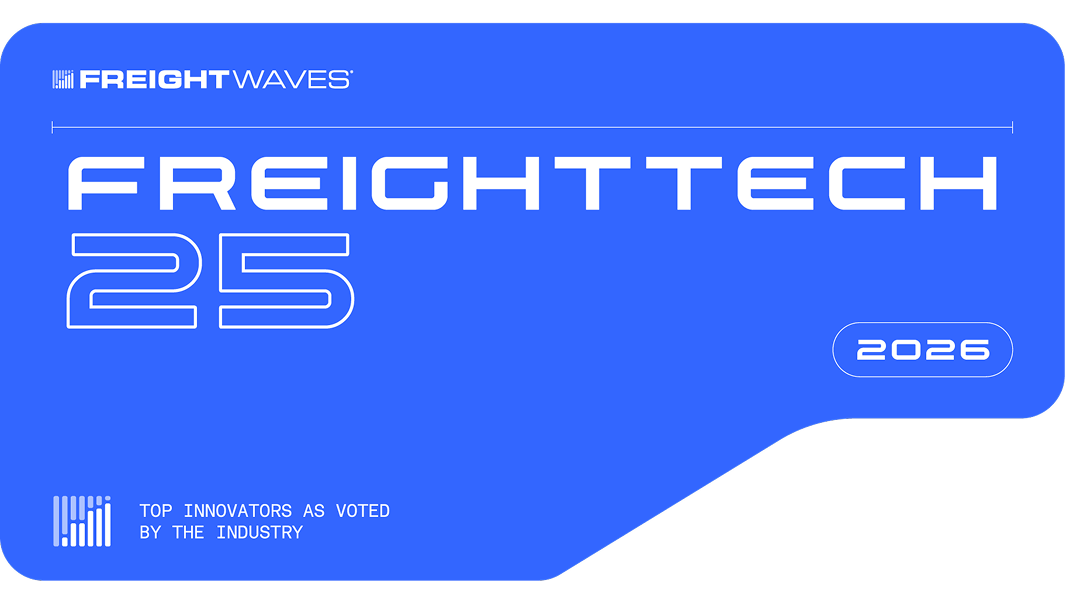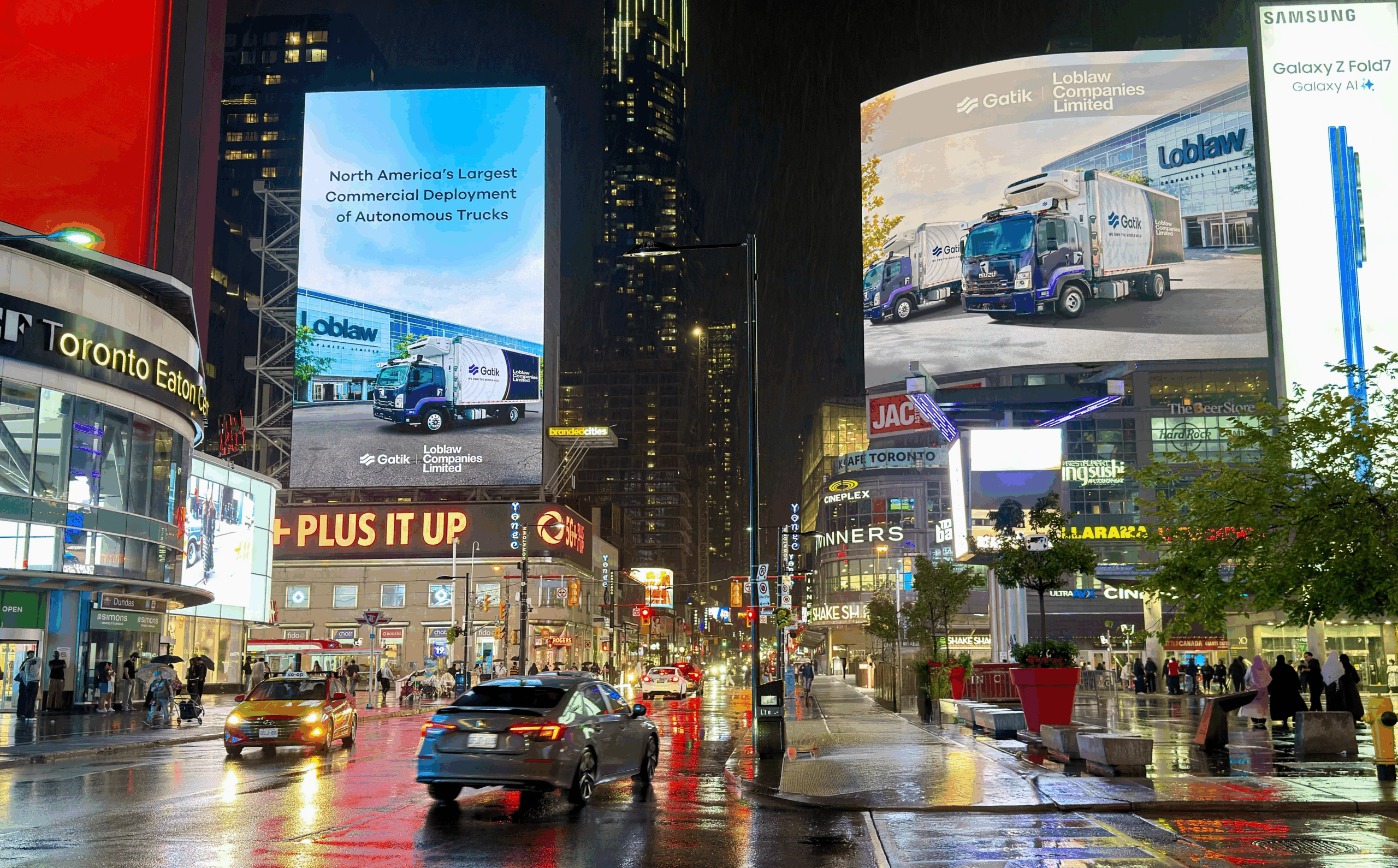
We focused on middle-mile logistics for deploying AI-driven autonomy because this segment of the logistics industry offers unique opportunities to adopt and scale autonomous vehicles (AV). Recently, we spoke about these middle mile opportunities at the International Conference on Intelligent Transportation Systems as part of a workshop titled ‘Foundation Models for Autonomous Driving (FMAD)’.
Middle-mile logistics refers to the transportation of goods between key distribution hubs, such as warehouses or distribution centers, and retail stores or regional depots. Unlike long-haul trucking, which focuses on interstate and cross-country routes, middle-mile routes are typically much shorter – often less than 400 miles for each daily operation cycle and highly repeatable. These shorter routes make middle-mile logistics a critical part of supply chain efficiency, ensuring that goods move quickly from central storage facilities to the locations where they will be sold or distributed to consumers. Automating this segment of the industry helps to address key issues currently being faced, such as driver shortages, increasing consumer demand, and supply chain resilience.
 Figure 1: Comparison between first, middle and last mile delivery
Figure 1: Comparison between first, middle and last mile delivery
Advanced Automation Technologies and the Middle Mile
Let’s examine the characteristics of the middle mile that make it the ideal use case for deploying advanced automation technologies. The known and repeatable routes typical in middle mile logistics align perfectly with the capabilities of AVs. These routes typically involve less variability and fewer unpredictable elements compared to long-haul or last-mile deliveries.
Last-mile delivery often operates from a finite set of retail stores or restaurants to an almost infinite number of consumer locations, adding extreme complexity to implementing an autonomous solution. Conversely, long-haul trucking typically operates from a single starting point to a single distribution center or hub, with more than 400 miles travel distance in each cycle of operation. While notably a more simplified routing situation, long-haul is not without its own unique challenges to safe, reliable automation.
Middle mile trucking bridges the gap between urban last-mile and highway long-haul environments. The main benefit of this segment of the market, from an autonomy standpoint, is the opportunity to define available routes, while allowing for gradual network expansion based on evolving AV functionality. It involves fewer unpredictable elements compared to long-haul or last-mile logistics. The middle mile has known traffic patterns and fixed routes that simplify the Operational Design Domain (ODD) to ensure it’s tightly controlled.
Each route that is considered can be assessed and optimized based on different parameters, such as road safety as well as the challenges that it may present for the available autonomy functionalities and time/cost criteria. Known traffic patterns, minimal urban complexity, and structured pick-up and drop-off points are all factored into the final defined routing. This approach allows the AVs to maintain safe, consistent operations under predictable conditions. Moreover, the prior knowledge about the static elements of the ODDs that has been captured during the initial design of the routes is frequently updated from data captured during the AV’s repeated travel of the route. This regular data capture is also useful for fine-tuning fallback and heuristic models.
Autonomy: Mapping, Localization, and Perception
Critical to the safe deployment of AVs is dependability and reliability of autonomy mapping. Last-mile urban environments are highly dynamic, with new construction, road closures, and constantly changing traffic patterns. These variables provide significant challenges for both offline and online mapping. AVs must deal with high-resolution, frequently updated maps to handle complex street networks, narrow lanes, and obstacles such as parked cars or delivery vehicles. Real-time online mapping1,2,3 is essential for avoiding unexpected obstructions and rerouting dynamically based on traffic and pedestrian activity.
 Figure 2: VectorMapNet is a baseline for online mapping in autonomous trucking that uses the camera and LiDAR data as the input to the model
Figure 2: VectorMapNet is a baseline for online mapping in autonomous trucking that uses the camera and LiDAR data as the input to the model
Localization is also a challenge in last-mile delivery due to signal occlusions from tall buildings, frequent GPS signal loss, and interferences in urban areas. Moreover, accurate localization is key to ensuring the AV can navigate tight spaces and interact with vulnerable road users (VRUs) in a safe and predictable manner.

 Figure 3: Gatik perception system identifying vehicles and scene objects in an intersection in a semi-urban area.
Figure 3: Gatik perception system identifying vehicles and scene objects in an intersection in a semi-urban area.
Tracking pedestrians, cyclists, and vehicles can be complex due to their erratic movements. Pedestrians may jaywalk or cyclists might suddenly change lanes, requiring the autonomous system to react swiftly. Due to low speed in urban areas, the required range for perception is low and the focus is mainly on the area around the autonomous vehicles. In addition, occlusions, particularly from parked cars, buildings, trees, or other urban infrastructure, create frequent blind spots. This requires the vehicle to rely heavily on advanced tracking models that estimate the likely behavior of hidden objects or pedestrians emerging from behind obstructions.
Offline mapping is easier in long-haul logistics, as highways are generally predictable and mapped in detail. However, online updates in long-haul logistics are still necessary to manage route deviations due to accidents, roadwork, or changing weather conditions over hundreds of miles. Real-time updates are necessary to avoid disruptions and to find alternate routes in those situations. However, the frequency of changes is much less than urban areas, and even more predictable from public construction zone announcements on highways. Localization for long-haul relies more on global navigation satellite systems (GNSS), as there are less structural landmarks present for vision-based localization on highways and roads.
In long-haul trucking, occlusion issues primarily arise from other large vehicles, such as trucks and buses, obstructing the vehicle’s sensors. These blockages are temporary and less frequent than in urban settings, but the system must be capable of predicting road conditions ahead based on partial information. In addition, long-haul trucking faces challenges in object detection and tracking in open spaces that arise from glares, reflections, fogs, and bad weather conditions4.
Offline mapping in middle-mile operations for known and repeatable routes is more manageable than long-haul or last-mile logistics. The utilization of known, repeatable routes reduces the need for constant updates. Additionally, offline maps are only necessary for a planned network of routes. This makes the process much more cost-effective compared to mapping entire neighborhoods or residential areas. Middle-mile vehicles rely on pre-mapped routes with HD maps, and the controlled environment simplifies the mapping process.
Middle-mile trucking deals with less dense environments compared to last mile delivery, however they still face challenging detection and tracking of VRUs and traffic regulatory elements. This lowers the frequency of dealing with erratic behavior of road users, and lowers the overall risk. Also their speed is still relatively low compared to the long-haul, adding less pressure on the long-range detection and tracking. They are also less prone to open-space artifacts such as glares, shadows, and reflections.
Autonomy: Behavior
Last-mile AVs must predict and plan for a highly dynamic environment. Pedestrians, cyclists, and vehicles all behave unpredictably, especially in dense urban areas. This means the system needs to constantly update its behavior, predicting whether a pedestrian will cross the road or if a cyclist will change lanes. An important challenge for behavior prediction and planning is handling interactive behaviors. Last-mile autonomy demands complex interactions, such as merging into busy traffic, handling right-of-way at intersections, and yielding to pedestrians at crosswalks. The vehicle must be adept at responding to cut-ins from other drivers, avoiding collisions, and performing high-precision maneuvers like parking and navigating tight spaces.
In contrast, long-haul AVs have simpler prediction and planning requirements due to the inherent predictability of interstate highways. Their focus is on maintaining lane position and adjusting speed based on traffic flow. Behavior prediction of other vehicles occurs primarily during merging and lane changes, and cut-ins from other vehicles at high speeds. These interactions often require fewer high-precision maneuvers compared to urban driving. Regardless, these interactions require quick response times to ensure the AV continues to operate safely.
 Figure 4: Gatik autonomous truck handling unprotected right-turn in an intersection in a semi-urban area.
Figure 4: Gatik autonomous truck handling unprotected right-turn in an intersection in a semi-urban area.
Middle-mile operations benefit from more predictable traffic patterns and more controlled environments. The AV can rely more on historical data to anticipate traffic flows and optimize routes, making prediction and planning more manageable than in last-mile logistics. The fewer dynamic interactions reduce complexity, allowing the AV to focus on handling simpler interactive behaviors, such as merging into light suburban traffic and negotiating right-of-way at intersections. While it requires less frequent high-precision maneuvers compared to last-mile AVs, the middle-mile still demands some level of planning for docking at retail locations or distribution centers. Known and repeatable routes provide rich prior information about the static elements of the scene, which can be useful in having efficient prediction and planning.
By leveraging predefined routes, simplified ODDs, and efficient mapping and perception capabilities, middle-mile operations address critical industry needs. While facing unique challenges from both urban and highway environments – such as navigating mixed-speed zones and managing VRU safety, middle mile AI-driven autonomy can benefit from consistent route knowledge and adaptable planning. As this technology matures, it holds the potential to streamline distribution networks, setting a foundation for the broader adoption of AVs in logistics. It offers the promise of making cities safer and more efficient, enabling retailers to meet their customers’ increasing expectations, and even creating new opportunities for workers in the logistics industry. To read Dr. Aleksandr Petiushko, Gatik’s Head of AI Research, and Dr. Amir Yazdani’s, Senior Research Scientist, full presentation on FMAD as it relates to the middle mile, click here.
If you’d like to be part of the future of AI-driven autonomy, join us!
By: Amir Yazdani and Aleksandr Petiushko
References
1Sun, Rémy, et al. “Mind the map! Accounting for existing map information when estimating online HDMaps from sensor data.” arXiv preprint arXiv:2311.10517 (2023).
2Gao, Jiyang, et al. “Vectornet: Encoding hd maps and agent dynamics from vectorized representation.” Proceedings of the IEEE/CVF conference on computer vision and pattern recognition. 2020.
3Gu, Xunjiang, et al. “Accelerating online mapping and behavior prediction via direct bev feature attention.” arXiv preprint arXiv:2407.06683 (2024).
4Yahiaoui, Lucie, et al. “Let the sunshine in: Sun glare detection on automotive surround-view cameras.” Electronic Imaging 2020.16 (2020): 80-1.
About Gatik
Gatik AI Inc., the leader in autonomous middle-mile logistics, is revolutionizing B2B supply chains by enabling safe, consistent, high-frequency freight movement. Gatik’s AI-Driven Autonomy is transforming short-haul logistics for Fortune 500 retailers, and in 2021 the company launched the world’s first driverless commercial transportation service with Walmart. Gatik’s medium-duty autonomous trucks are commercially deployed in multiple markets including Texas, Arkansas, Arizona, and Ontario. Gatik partners with industry leaders including Isuzu Motors, NVIDIA, Cummins, Ryder, and Goodyear. Founded in 2017 by veterans of the autonomous technology industry, the company has offices in Mountain View, Dallas-Fort Worth, Phoenix and Toronto.
Safe Harbor Statement
This article or press release contains forward-looking statements, including but not limited to, statements regarding future business strategies, plans, objectives, and anticipated performance. These forward-looking statements are based on the current expectations and beliefs of Gatik and are subject to various risks, uncertainties, and assumptions that could cause actual results to differ materially from those expressed or implied in such statements.
Factors that could impact these forward-looking statements include, but are not limited to, changes in market conditions, economic factors, competitive dynamics, regulatory developments, and unforeseen operational challenges. Gatik undertakes no obligation to update or revise any forward-looking statements to reflect new information, future events, or otherwise, except as required by law.
Readers are cautioned not to place undue reliance on these forward-looking statements, which speak only as of the date of this release.


